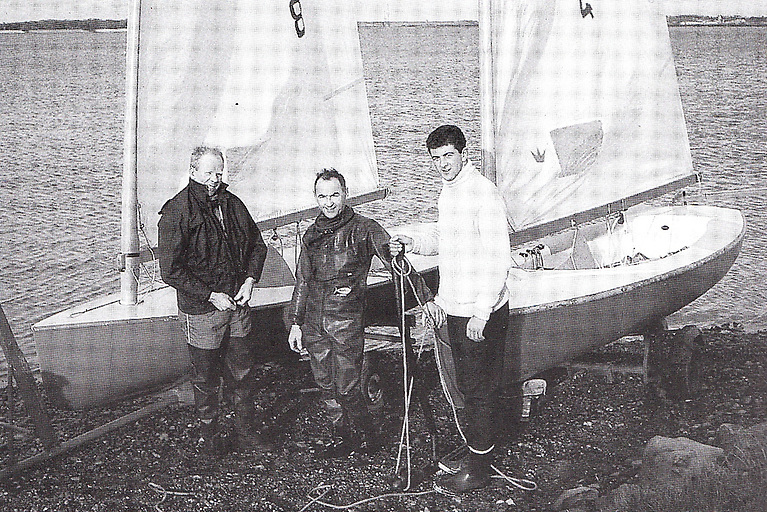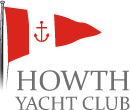Sean Flood Obituary
The Commodore and Flag Officers regret to advise the members of Howth Yacht Club of the passing of Club member Sean Flood on 21 September 2023.

Sean enjoyed a magnificent career in sailing which saw him progress from being a top-class dinghy sailor. He travelled to the 505 Worlds in Australia in 1966 – when getting to the other side of the World was a major adventure - and took a lead role in ensuring that as many people who wished to try the sport had the opportunity to do so.
Born in 1932, Sean joined Clontarf Yacht and Boat Club in 1953 and soon established himself as the man to beat in the IDRA 14 Class. His first boat was ‘Carmel’ and in 1955 he acquired ‘Miss Betty’, boat number 54, from Clayton Love, which he won the Irish Class Championship with in both 1958 and 1959. Whilst competing at the front end of the IDRA fleet, he was also involved in the administrative side of the sport and served as Commodore of Clontarf Y&BC in 1959 at the age of just 27.
Having mastered the skills of racing an IDRA, Sean was on the lookout for a new challenge and bought himself an International 505 dinghy, which he named after a very important person in his life, Joan. The Class was state of the art at the time, designed with the intention of becoming the two-person high performance dinghy for the 1956 Olympics. Although it lost out to the Flying Dutchman, the boat went on to achieve bigger fleets than the Dutchman ever did and in the late 50s a group of top Irish sailors decided to move into the Class, the 1959 Worlds being hosted by Royal Cork. Whilst the IDRA 14 is a clinker-built 14-footer with a minimum hull weight of 148 kgs and a sail area of 24 m2, the 505 of that time had a cold moulded ply hull that was two feet longer and a lot wider, weighed 20 kgs less and had a sail area nearly double that of the IDRA. It is still renowned as being one of the most demanding two-man dinghies to race and an IDRA graduate, even one as skilled as Sean, had a mountain to climb to get to grips with the boat, which planed upwind. With no other 505s to race against in Clontarf, Sean’s Saturday recreation was launching the boat from the CY&BC slip, sailing across the Bay to race with the Dun Laoghaire fleet (where he had joined the Royal St George YC) and then sailing home again that evening. The Class’s 1964 Worlds were again hosted by the RCYC and, having caught the bug for racing against the very best, Sean competed at the 1965 Worlds in North Africa (Tangiers) and at the 1966 event in Australia (Adelaide), where his opposition included Paul Elvstrom, by then the holder of five Olympic gold medals.

Winter training with the Olympic Finns at Broadmeadow Water in Malahide in 1965 with Sean Flood, Neville Maguire and Richard Burrows.
Sean joined Howth Yacht Club in 1966 and by then was expanding his activity afloat, becoming one of the first Irish sailors to adopt the Finn singlehander, along with Neville Maguire, Richard Burrows and Eddie Kay. He was also racing keelboats and, again with Neville, sailed aboard Ian Morrison’s Vanja, a 30m2 sea-going classic that did not count guardrails amongst its safety equipment. He competed in the 1969 transatlantic race from Newport to Crosshaven on Perry Greer’s Helen of Howth and was aboard Otto Glaser’s Red Rock III for the 1977 Admiral’s Cup, following it with a Fastnet aboard Denis Doyle’s Moonduster, another lifetime friend. He fell under the spell of the timeless Dragons, which then enjoyed a strong fleet at Howth Yacht Club. He bought Aletta from Frank Lemass and, together with Robert Michael and Russell Rafter, spent a long cold winter preparing the somewhat tired hull and rig to the standard needed to compete at the front of the fleet. Their efforts were rewarded with victory at the 1973 Dragon Nationals, another championship win for Sean’s sideboard. In 1980 he bought Country Girl, a Doug Peterson designed Half Tonner that was renowned as being ‘unbeatable in heavy air’. Sean’s last boat was Rhapsody, a Shamrock Half Tonner, on which he was able to compete again with Neville Maguire, who by then owned sister ship Demelza. The pleasure of cruising also came into his life and he enjoyed the more leisurely recreation afloat that it offered, particularly around the Mediterranean on board Brian Hegarty’s Oleander of Howth. He continued to regularly sail from Howth aboard Rhapsody, usually accompanied by his son Des, until declining health in recent years curtailed his ability to get out as often as he would have liked. However, he still enjoyed visiting the Club and he and Joan were lunchtime regulars.
Although he competed at the very top levels in all types of boats in Ireland and internationally, one of Sean’s greatest interests was in helping more people to get afloat and sample the sport that gave him so much pleasure. After enlisting in the Naval Reserve, An Slua Muiri, in March 1949, Sean was commissioned as a Lieutenant in 1955 and his annual Naval Service training weeks gave him the opportunity to sail on Asgard, Erskine Childer’s boat of gun running fame, that had gained a second life in a sail training role following its purchase by the Irish Government in 1961. Although he retired from An Slua Muiri in 1964, he retained an abiding interest in the Asgard and was one of the initial members of Coiste an Asgard, the body appointed to oversee the use of Asgard for training young people in the skills of the sea. Asgard was taken out of service in 1974 and replaced with Asgard II in 1981, a purpose-built brigantine-rigged vessel that provided training courses for countless young people until it sank in 2008. The Government’s decision not to replace it was a cause of great upset to Sean and he became one of the founders of Sail Training Ireland, a ‘not for profit’ organisation set up to ensure that sail training opportunities continued to be available in the absence of an Asgard replacement. He was also appointed as International Ambassador of Goodwill by Sail Training International, the group that provides an international voice for sail training activities and organises the World-famous Tall Ships races. Sean himself chaired the Organising Committee for the Tall Ships race to Dublin in 1998.
Apart from his sail training interests, Sean was heavily involved with the Irish Dinghy Racing Association and continued his involvement as a Council member when it went on to become the Irish Yachting Association, latterly known as Irish Sailing. His organisational skills were also put to good use in pulling together ISORA Weeks, which saw the cream of the Irish keelboat fleets competing for kudos as top boats in their classes. He chaired the Admiral’s Cup selection committee in 1977 with the objective of ensuring that the Irish team was chosen and prepared to perform at its best. That team consisted of Big Apple, Silver Apple and Irish Mist II, three boats that still evoke memories for those of a certain age.
When asked about Sean’s most striking characteristic as a sailor and as a person, one of his former crewmates immediately summed him up with the phrase ‘never give up’, a philosophy that he applied to all aspects of his life, both afloat and in his very successful business career. Sean was committed to participating in, promoting and facilitating access to a sport that he loved. Our sympathies go to his wife Joan and to his children - daughters Lindajane and Sallyann and son Des - as well as to the extended Flood family. He was the epitome of a man who loved the sea and sailing and someone of whom it can be said, without fear of contradiction, that we will not see his like again. He will always be remembered for his big warm friendly smile and his larger than life personality.

Sean with his wife Joan and Derek Kirwan in 2016 at an RNLI Fundraiser

The deepest sympathies of the General Committee, staff, and members of HYC go out to the family and friends of Sean in their time of grief.
Full death notice & funeral arrangements here.
May he rest in peace.
Some more photos below

